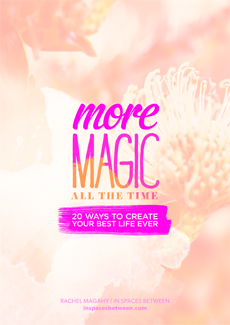
It dawned on me a few weeks ago. That morning I’d written notes for a blog post on index cards as I sat at the traffic lights on my drive to work. I was also half-listening to the 8am news broadcast on Triple J. During the day, I’d consistently had at least nine windows open on my computer (11 if you count the two half written emails) and at lunch time, I’d eaten at my desk whilst uploading images to Facebook and talking to my man on the phone about what we’d eat for dinner.
Clearly I had problems with focusing on the task at hand. Big problems. And if we draw an analogy of the brain being like a computer, well, with this many windows constantly open, my hard drive was being significantly compromised. Programs weren’t loading, error messages were stopping me in my tracks. In other words, I was getting a whole lot of nothing at all accomplished.
So I decided to give the Pomodoro Technique a go. Pioneered in the 80’s by Francesco Cirillo, the Pomodoro technique is a time management method that centres around the use of a timer (the name comes from the retro tomato-shaped kitchen timer) to break down work into 25 minute intervals. Basically, you choose a task to be accomplished, you set the timer, work for 25 minutes solely on that task (without internet surfing/ toggling/getting up to raid the fridge) and once the 25 minutes is up, you treat yourself to a five minute break to do whatever you like before starting again. The premise is two-fold: by working in manageable time slots, you eliminate the anxiety of time and most importantly, you enhance your levels of focus and concentration.
When studying what makes people truly happy, psychologist Mihaly Csikszentmihalyi (looks impossible but is pronounced “me-high chick-sent-me-high”) found that we experience optimal fulfillment and engagement when we are in flow (or “in the zone”). Essentially, that feeling that comes from being so completely absorbed with what we are doing that we lose track of time. I’m all for the majestic feeling of getting flowy with it so I decided to apply the Pomodoro way of thinking to a couple of tasks I’d been putting off.
So… does it work?
After a week of trying out the Pomodoro technique, I’m pleased to report that yep, it actually does work. Which is big for a chronic ball-juggler like me. We live in a society that encourages “being overwhelmed”, dressing ourselves up smugly in our “busyness” and wearing it like a badge of honour. “How’s your week been?” we ask friends. “Busy” they sigh in reply. I’m up there with the best of them. I thrive on being busy. And believe me, I’m not saying that in a braggy way, I’ve always been like that. I feel weird without a full to-do list. Thing is though, there’s a difference between being productively busy and busy because we’re overwhelmed with the sheer number of tiny tasks we’ve let accumulate. The latter was the one I was hoping to combat with my little experiment. I used the handy focusbooster app to help me on my way but an iPhone or alarm of any description will also do the trick.

Triumph Number One: Finishing half-written blog posts
Like most of us, random ideas pop into my head at the strangest times and I find that if I don’t write them down somewhere, I forget about them. Just a quick aside on that, I’ve noticed that the more I try and multi-task, the worse my memory gets. Sometimes I’ll do things so unconsciously, on total auto-pilot, that I literally cannot recall doing them. Does that happen to you too? Big, bold note to self with asterisks and underlines: be more present.
Something that was becoming a source of overwhelm for me was the number of ‘Draft’ blog posts that sat in the back-end of my site. I’d jotted down a few words for articles I planned to write, but every time I thought about writing them, I’d (conveniently) found something else to do. So I made a commitment to tackle them. One of them was the vision board article I published last week and the other was this one. With a glass of water by my side, the TV off and my phone on silent, I sat down, wrote a few bullet points, set my timer and started writing. Writing is a lesson in itself for me, and doing so more regularly means I’m really gaining a valuable insight into when I procrastinate and why. I’ve always found it easier to write the fleshy bits first and the introduction last, and have recently stopped trying to do otherwise. Instead of fumbling over the right words to kick an article off, I now just get in and do it in. Coupled with my newfound discipline of writing in short bursts, it seems to be working. Hooray!
Triumph Number Two: Organising my Google Reader
The thing I love most about the internet is that I’m constantly finding new blogs to read. Problem is, the abundance of great sites I discover means I’ve got bookmarks saved on my work computer, my iPad and my computer at home, and half the time I forget to copy them across. I’m missing out on updates and it all feels a bit messy so I wanted to start afresh with a new Google Reader to organise my bookmarks in one place that could be accessed wherever I was. I’d convinced myself it would take forever to add all the subscriptions from my three Favourites lists, so naturally, I’d been putting it off for some time. The thing is, checking bookmarks individually is time-consuming, so I was actually wasting quite a sizeable amount of time by not putting aside the time to organise my Reader. Last week, I bit the bullet. It only took me a little over an hour and the feeling of accomplishing something I’d been dreading was second to none.
Key Learnings
1. “Where the mind goes, energy flows” so when we scatter our attention every which way, we end up diffusing the energy we give to each task. The result? Failure to Finish Syndrome. Simplifying, “chunking” (breaking tasks into smaller, more tolerable bits) and just starting means full energy is given to each task and we’re more productive overall. Awesome!
2. Do the hard stuff first. There’s no denying it’s easy to push the harder, more mundane or challenging tasks down the list “for another time” but getting them done provides a mental lift – that is, creates in your mind the thought that “If I can do that, then the rest is easy.” Letting things play on your mind and transferring tasks from one to-do list to another (and another…) taxes our reserves of enthusiasm that could be better used trawling Facebook creating something of value.
3. Be competitive. With yourself, that is. Try and beat your timer. Think how good it will feel when you’ve cleaned the house in 15 minutes rather than 25. Or when you get that uni assignment/ boring work report done in half the time.
4. Give yourself a break. Often we overload ourselves with unrealistic expectations of what we can get done, so we decide not to do any of it. We get lazy, we procrastinate. Pick one thing to focus on at a time, give that task your all and note how your efficiency increases. Visualise how you’ll amazing you’ll feel when you’re finished.
+ Soooo…. are you a procrastinator? Do you think you’ll give the Pomodoro technique a go?
+ Tell me in the comments what you do to keep focused!
Images: 1. from Photobucket 2. Google Images





















